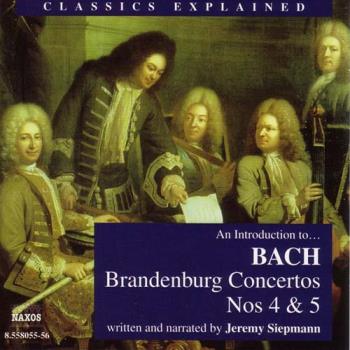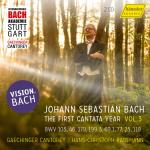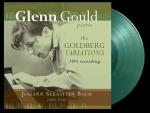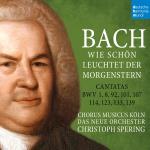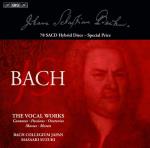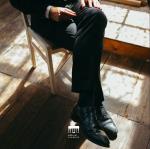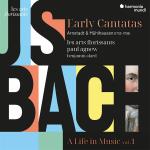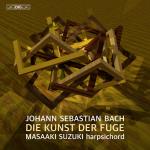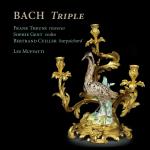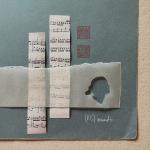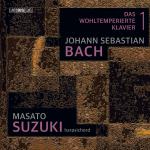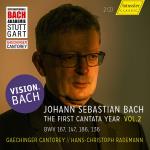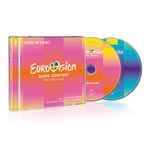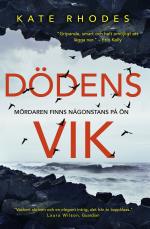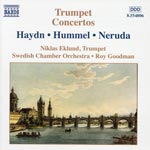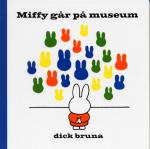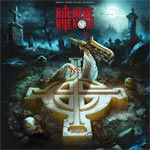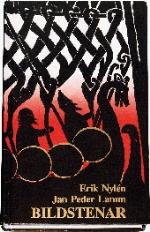Klicka för att öppna expanderad vy
59 kr
CD
INFORMATION OM PRODUKTEN
Bach: Introduction To Branderburg Conc. [2 CD]
FAKTA
| Artist/grupp: | Bach |
| Titel: | Introduction To Branderburg Conc. |
| Typ: | 2 CD |
| Kategori: | Musik/Klassiskt |
| Releasedatum: | 2002-09-01 |
| Artikelnummer: | 116180 |
| Lagerstatus: | Beställningsvara Leveranstid: från 7 vardagar |
| EAN: | 0636943805527 |
| Antal skivor: | 2 |
LÅTLISTA
- 1. The Brandenburgs As Concerti Gross
- 2. Introduction: Melody, Theme And Mo If, Bach's Opening Gambit
- 3. Onwards And Upwards: Motif No.2 An Its Function
- 4. The Two Elements Of Motif No.2 And The Effect Of Their Combination
- 5. The 'motto' Rhythm Hidden Even Wit In The Opening Bar
- 6. Motif No.3, Introduced By The Two Ecorders, Has A Kind Of 'hovering'
- 7. Motif No.3, Repeated For A Second, 'directed' Listen
- 8. Bach Reminds Us Of The Opening
- 9. Motif No.4
- 10. Motif No.5, A Lovely, Bouncy, Sync Pated Flourish, In Which All The In
- 11. Opening Ritornello (complete)
- 12. Episode 1 Begins With Virtuoso Ent Y Of The Solo Violin, Made Up Of Al
- 13. Motif No.3 Returns, Courtesy Of Th Recorders, Recently Sidelined By Th
- 14. Ritonello 2, A Varied Repeat Of Ri Ornello 1, Arrives After Much Harmo
- 15. Episode 2, Part 1, Preceded By The 'fanfare' Motif From Which Its Firs
- 16. Episode 2 Continued, With More Bra Ura Dazzle From The Solo Violin, Ke
- 17. Repeat Of Section For Purposes Of Earing The Harmonic Movement
- 18. Ritornello 3, With The Prominent P Rticipation Of The Soloists
- 19. Episode 3 Prove Retrospective, Fea Uring Transposed Repeats Of Earlier
- 20. Ritornello 4, Not Altogether What T Might Seem, Solo Violin Takes 'mo
- 21. Episode 4. Cue To Part 1, Focusing On 'soloistic' Counterpoint Provide
- 22. Return To Ritornello 4 To Hear Sou Ces Of Episode 4, Part 2
- 23. Episode 4 Continued, With Emphasis Placed On Conversational Interchang
- 24. Return To Opening Ritornello In Or Er To Enhance Awareness Of The Cont
- 25. Ritornello 5, Beginning
- 26. Ritornello 5 Continued, With Empha Is On The Determined Banishment Of
- 27. Cue To Complete Performance Of Fir T Movement
- 28. First Movement (complete)
- 29. Introduction: Rhythmic Motif Provi Es Basis For Whole Movement, The Ke
- 30. The Melody Not Much To Write Home Bout, Nor Is The Meek 'answer' Offe
- 31. Putting The Two Together, Thereby Stablishing A Relationship
- 32. Contrast And Syncopation
- 33. Listening From The 'bottom Up'
- 34. The Intertwining And Alteration Of Solo And Orchestra, The Irregularit
- 35. The Next Orchestral Phrase, Slowin The Pace But Not The Tempo
- 36. The First Section (complete)
- 37. The Next Section, Foreground Symme Ry And Background Variety
- 38. The Central Section's Groupings Ar Hugely Asymmetrical
- 39. Cue To Second Movement As A Whole
- 40. Second Movement (complete)
- 41. Introduction To The Third Movement ..
- 42. Fugue Subject
- 43. First Counter-subject
- 44. Second Counter-subject
- 45. Bass Entry Of The Subject
- 46. Exposition (complete)
- 47. First Episode, The Us Of Fragmenta Y Derivatives
- 48. The Difference A Detail Can Make!
- 49. Harmonic Rhythm Defined, Back To T E Beginning To Find The Seed...
-
...And Now The Blossom
- 1. The First Solo Episode, A Confusio Of Terms, Onwards, To The Introduct
- 2. Ritornello 2 Complete
- 3. Solo Episode 2 Dominated By Thrill Ng Virtuosity From The Solo Violin
- 4. Ritornello 3: Highly Contrapuntal Nd Dominated By Subject-derivatives
- 5. Ritornello 3 Continues: Engine Of Armonic Motion Repeated At Higher P
- 6. More On Ritornello 3: The Use Of L Ng, Sustained, Slightly Syncopated
- 7. Ritornello 3 (complete)
- 8. Solo Episode 3
- 9. The Two Recorders Converse In Cano , Accompanied For Six Exhilarating
- 10. Finishing Solo Exposition 3: Orche Tral Cellos Introduce What Sounds L
- 11. Approaching The Final Ritornello, Tretto Explained
- 12. Cue To Final Ritornello, Noting Te Sion-building 'pedal Point' In Cell
- 13. Coda
- 14. Cue To Third Movement
- 15. Third Movement (complete)
- 16. Opening Music, Analysis And Phony Nalysis, Shaw Quote, Music: Motif N
- 17. Music, Energy And Relationship
- 18. The Outlines Of A Melody Emerge
- 19. The Opening Bar Again
- 20. Motif No.2: Ta/dee-ya, Dee-ya, Dee Ya
- 21. Motif No.3, And An Important Featu E Of Its Rhythm
- 22. Fifth Symphony (opening) Kompositör: bEETHOVEN
- 23. Motif No.4
- 24. Motif No.5
- 25. Motif No.6
- 26. Episode 1: A 'love Duet'
- 27. Episode 1 Continued, Violin And Fl Te Reverse Direction Of Their Theme
- 28. 'false' Ritornello, Soloists Inter Upt, Rising 'sighing' Motif, Harpsi
- 29. Four Things Going On At Once, In V Olin, Flute, Harpsichord Right Hand
- 30. The Orchestra Returns, Picking Up T Exactly The Spot Where It Was Int
- 31. The Harpsichord Intervenes With De Ivative Of Motif 4, Key Shifts From
- 32. The Orchestra Returns To Foregroun And Brings This Section To An End
- 33. Harpsichord Emerges As Virtuoso, A Series Of Expectations Are Frustrat
- 34. A Backwards Look, Blurred Distinct Ons Between Soloists And Orchestra,
- 35. Out Of The Twilight Zone, A Sequen E Of Surprises
- 36. The Epoch-making Harpsichord Caden A And The Final Ritornello
- 37. Cue To First Movement
- 38. First Movement (complete)
- 39. Introduction, The Opening Ritornel O
- 40. The First Bar, The First Main Buil Ing Block
- 41. The Flute Motif
- 42. Opening Of The First Solo Episode
- 43. An Important Motif, The Second Mai Building Block
- 44. The Second Main Theme
- 45. Ritornello 2, Violin And Flute As Orchestra'
- 46. Episode 2, Inversion Of Original M Tifs
- 47. More On Episode 2
- 48. Episode 1 And Episode 2 Compared
- 49. Episode 2, Key Shifts From D Major To F Sharp Minor
- 50. Ritornello 3: An Exact Transpositi N Of Ritornello 1
- 51. Episode 3 Contrasted With Episode
- 52. Episode 3 Described In Detail
- 53. Rotornello 4, Second Main Theme's Irst Appearance In A Ritornello
- 54. Episode 4: Dominated By Inversions
- 55. Cue To Second Movement
- 56. Second Movement (complete)
- 57. Introduction: Ritornello 1
- 58. The Fugue Subject: Close Juxtaposi Ion Of Contrasting Elements
- 59. Flute Takes The 'answer', With Cou Tersubject In The Violin
- 60. Contrary Motion As A Contrapuntal Evice
- 61. Contrary Motion As A Listening Aid A New Theme
- 62. Playing With The Counter-subject, Musical Game Of Tag
- 63. Hidden Rhythms: Background Variety Behind Foreground Uniformity
- 64. Fugal Writing And The Compatibilit Of Parts, The Exposition
- 65. Episode 1, Taken By Soloists, Cont Ins Importand 'seeds'
- 66. The Orchestra Enters At Last, But Y Stealth
- 67. Stretto And Musical Football
- 68. Key Changes To B Minor, Introducin Extensive Middle Section
- 69. The Middle Section A Precursor Of He Mozartian 'development'
- 70. The Fugue Subject Out In Force: Fi St Four Immediately Consecutive Ent
- 71. Ambiguity Of Mode And A Scottish T Ist
- 72. Middle Section Continued, Harpsich Rd Dominates
- 73. Cue To Last Movement
- 74. Last Movement (complete)
Mer av Bach
DEN HÄR ARTIKELN INGÅR I DESSA KAMPANJER
GINZA REKOMMENDERAR:
Rekommenderas
Beställningsvara. Leveranstid från 7 arbetsdagar.
Detta är en artikel som vi tar hem speciellt för dig vid beställning.
Förbeställ om du vill hämta den i vår butik i Fåglum. Kontakta Kundservice
Detta är en artikel som vi tar hem speciellt för dig vid beställning.
Förbeställ om du vill hämta den i vår butik i Fåglum. Kontakta Kundservice
Snittbetyg: 0,0 av 0 omdömen
Skriv recension

